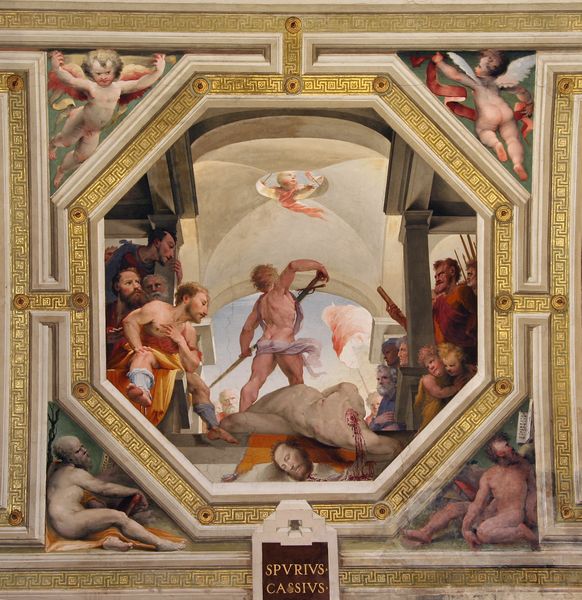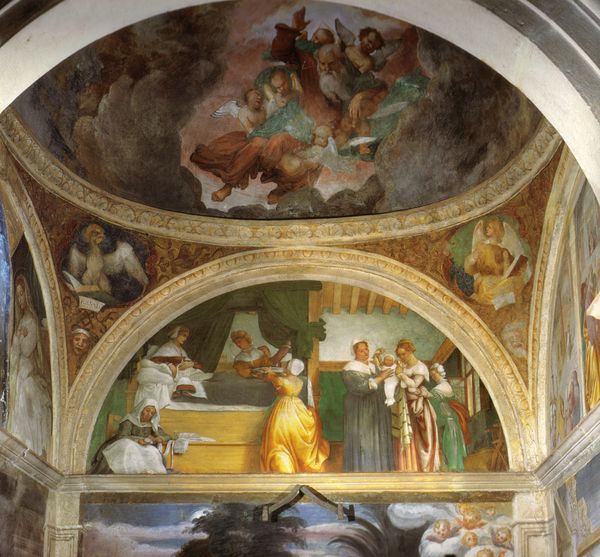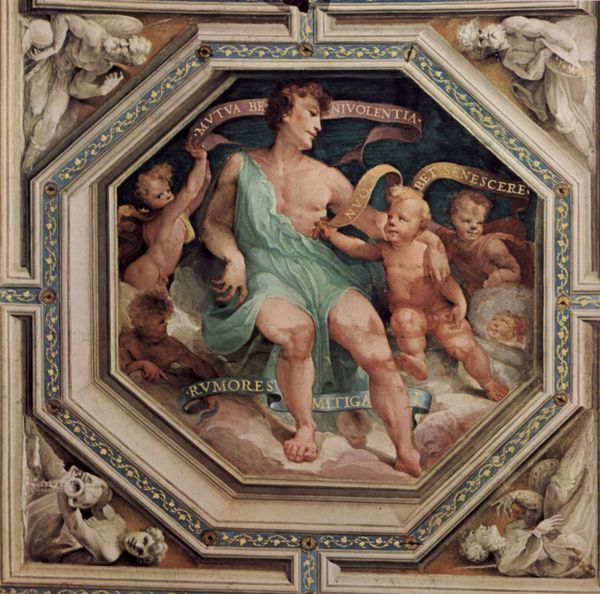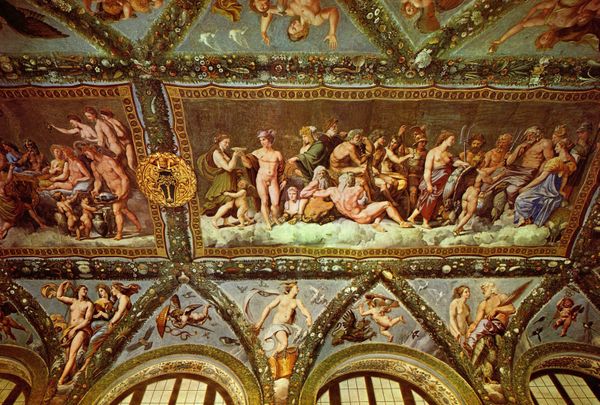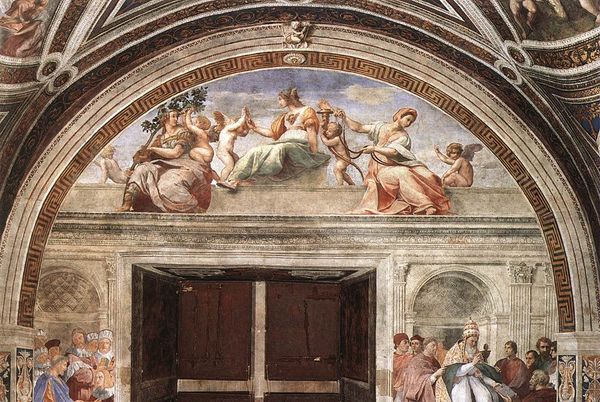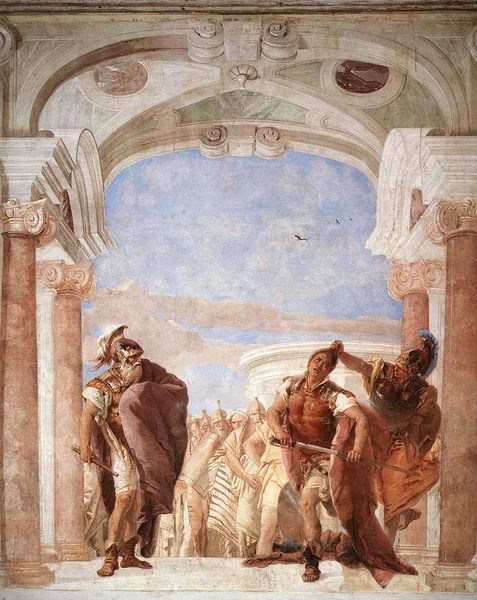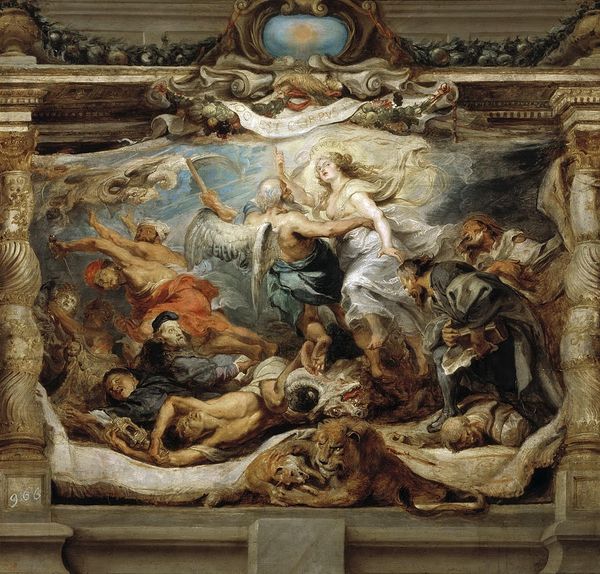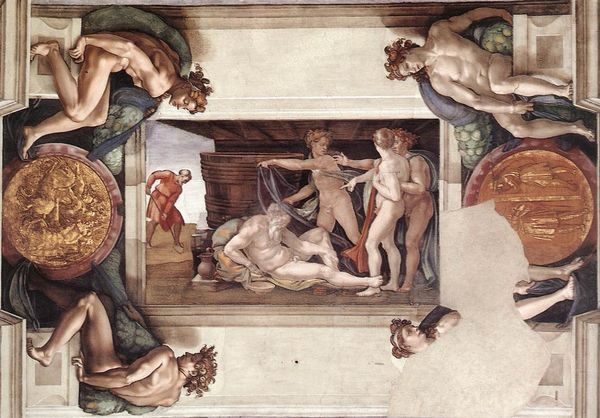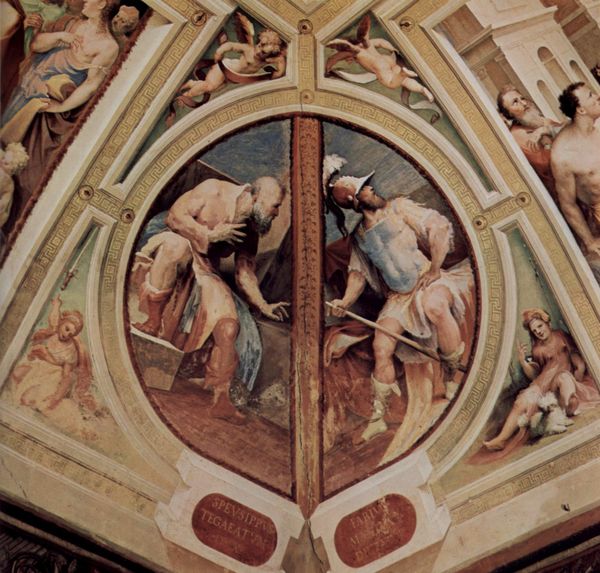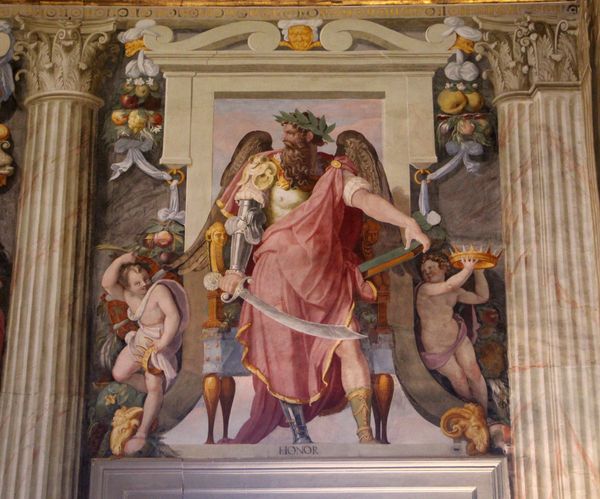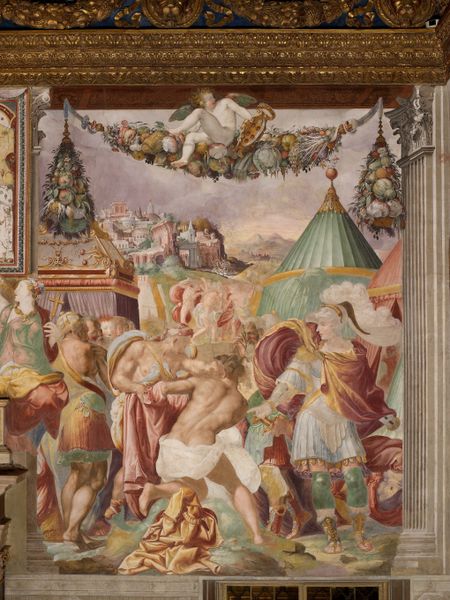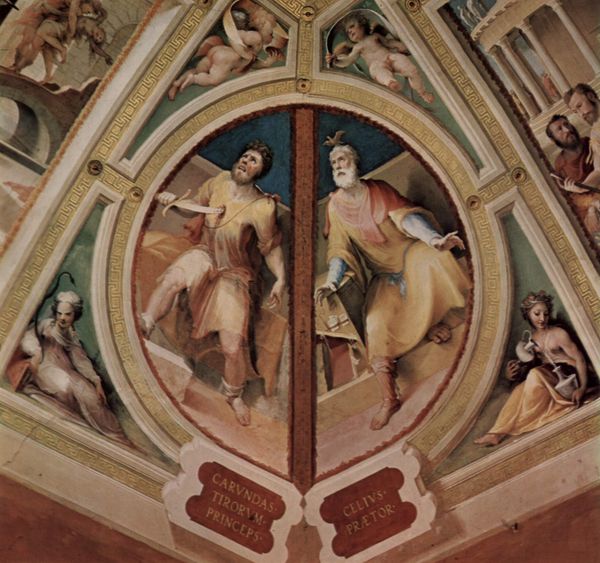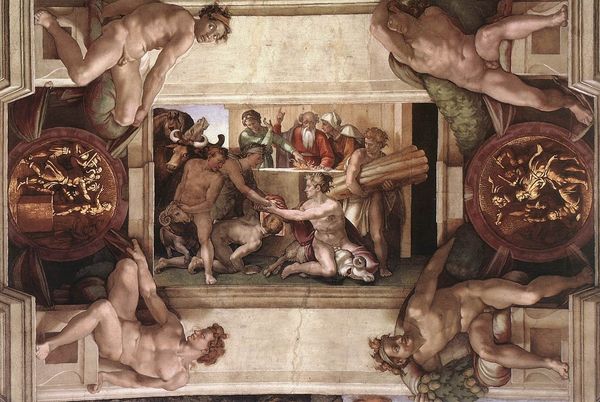
painting, fresco
#
narrative-art
#
painting
#
sculpture
#
perspective
#
mannerism
#
figuration
#
fresco
#
history-painting
#
academic-art
#
italian-renaissance
Copyright: Public domain
Curator: Here we have Domenico Beccafumi's "The Fall of Marcus Manilius," a fresco painted around 1535. It’s an intense scene; what’s your first impression? Editor: The figure plummeting through space dominates the image. It feels... theatrical, almost deliberately posed despite the chaotic nature of a fall. Curator: Absolutely. Beccafumi's Mannerist style is evident in the exaggerated perspective and the stylized poses. The way he manipulates space contributes to the overall drama. Consider the geometric forms surrounding the central image; their regularity draws all attention inward. Editor: And the materials themselves contribute so much. Fresco allowed him to directly engage with the architecture, embedding the narrative within the building’s very structure. Was he directing his laborers in specific frescoing techniques here to emphasize certain forms, and were there any challenges using the octagonal placement to its fullest? Curator: We do know his color palette also played a role in shaping the viewer’s interpretation. Note the delicate use of pastel colors, which serve to highlight the emotional distress rather than focus on brute force. It refines what could be a barbaric execution. Editor: And yet that fall... it represents such a rupture of the social order, rendered in the physicality of this single body and the way Beccafumi’s assistants managed this fresco process itself. To know that someone had to be constantly replenishing paint for each batch and that they are forever entrenched into its surface shifts the work's original meaning. Curator: You are pointing to its deeper connection to human vulnerability within a deterministic cosmology. Manilius, the astrologer, falling…it's about humanity grappling with fate itself, displayed elegantly on a two dimensional surface. Editor: By studying his craft—how he made use of assistants in production, the costs of the material components, and even considering how the octagonal shape dictates labor constraints--we unveil how this fate is determined by social construction just as much as predetermined order. Fascinating. Curator: Indeed. It's in moments like these that we realize no single interpretive approach could suffice. Each provides insight that the other alone cannot grasp.
Comments
No comments
Be the first to comment and join the conversation on the ultimate creative platform.
